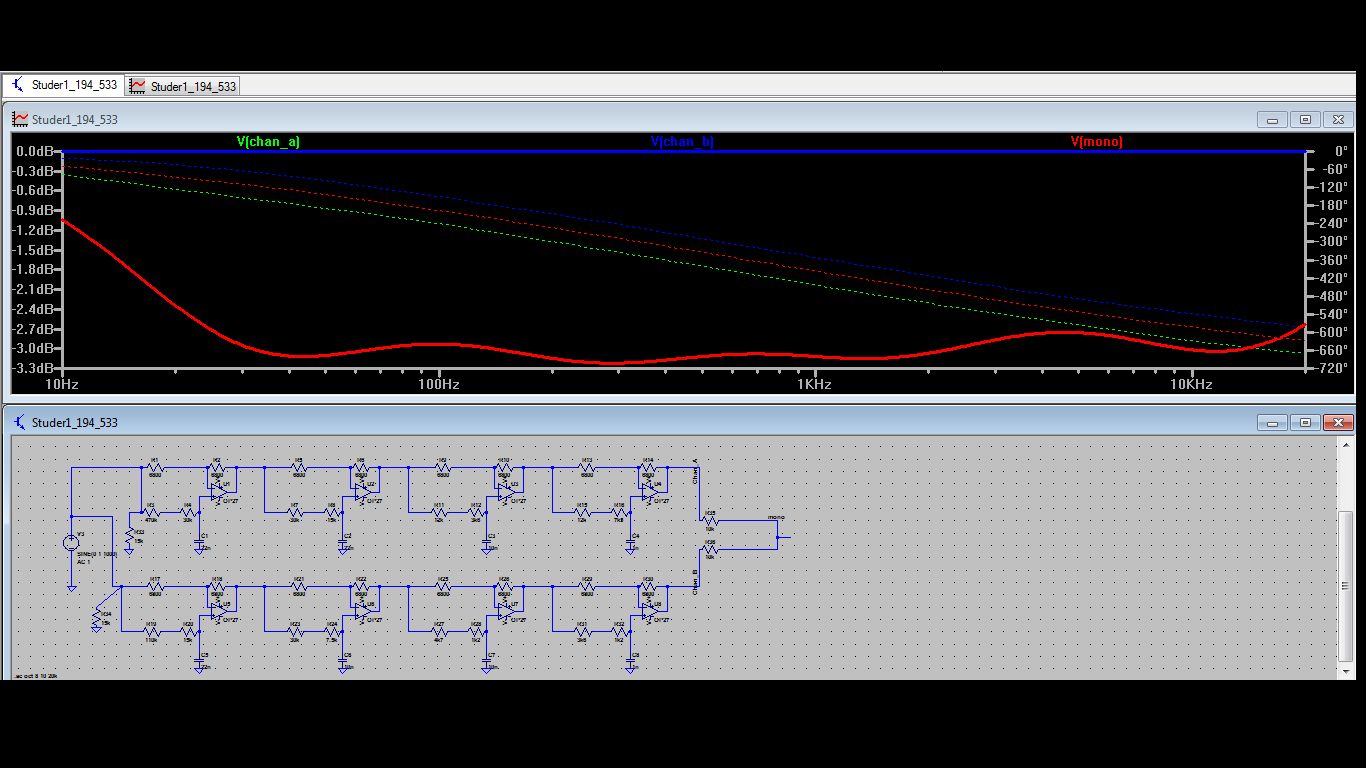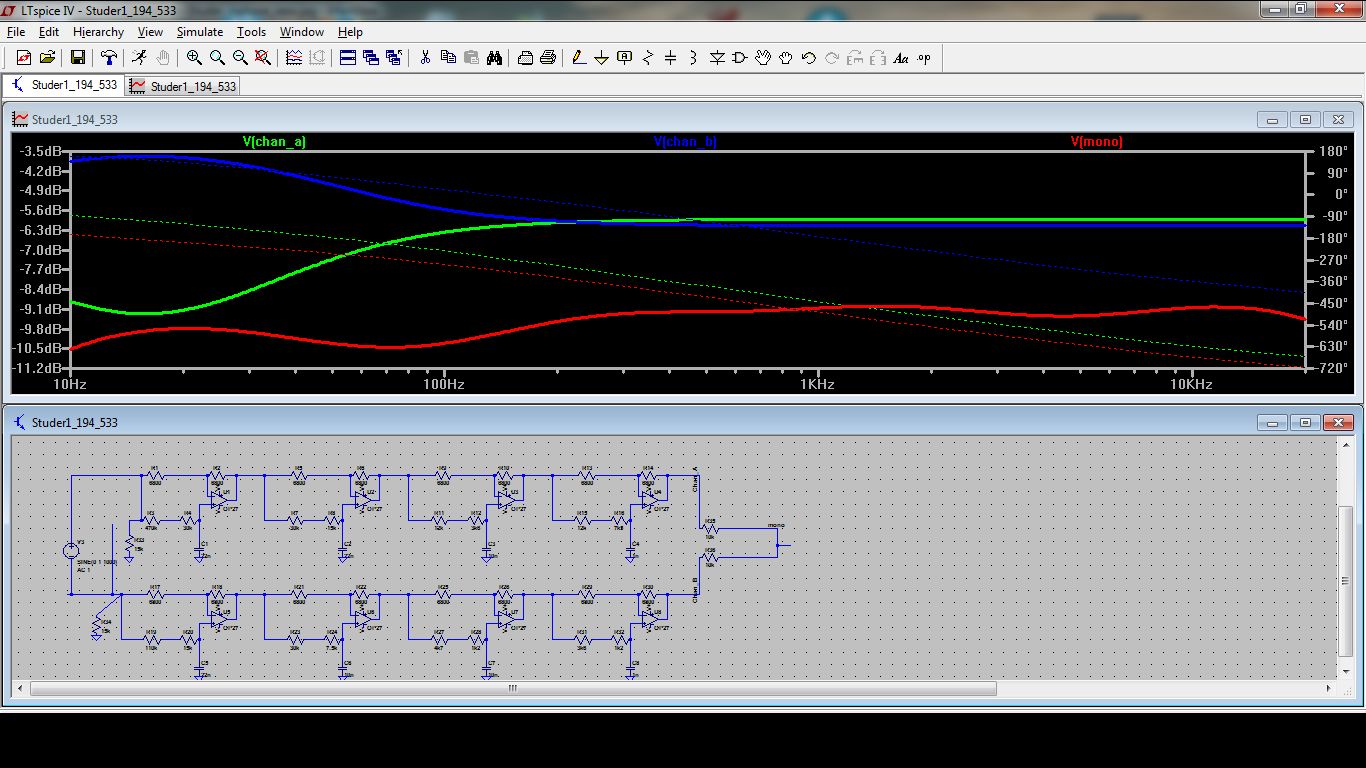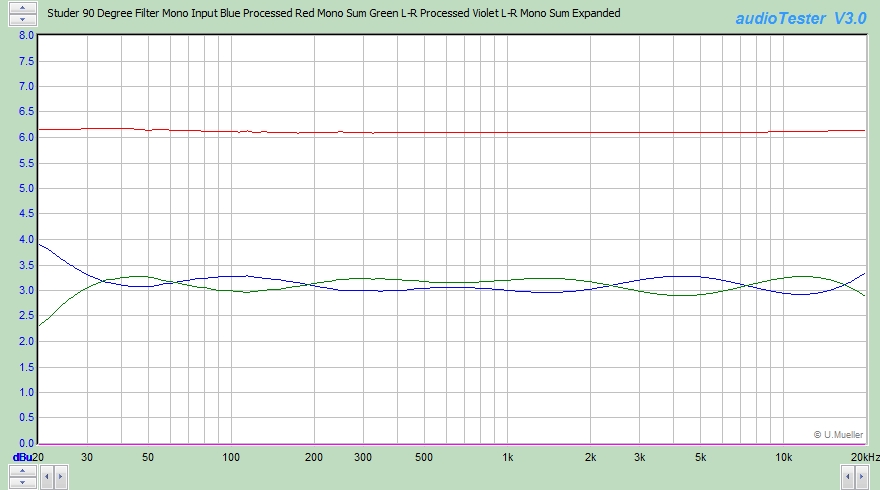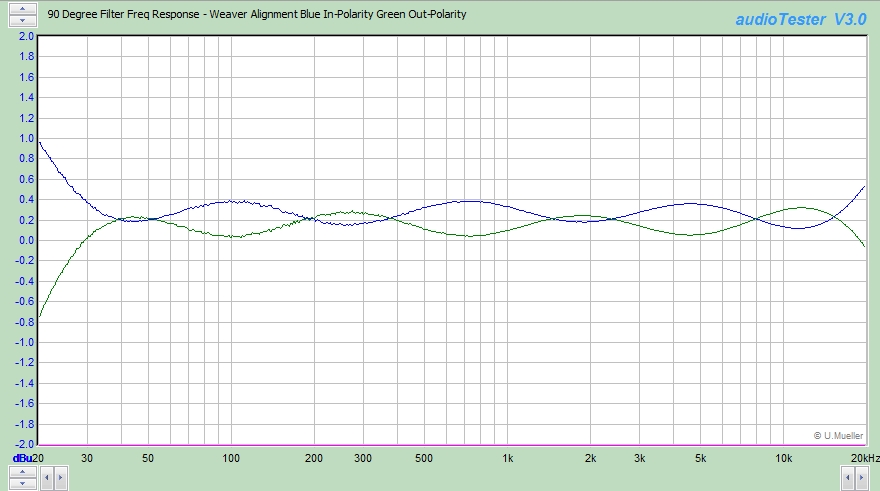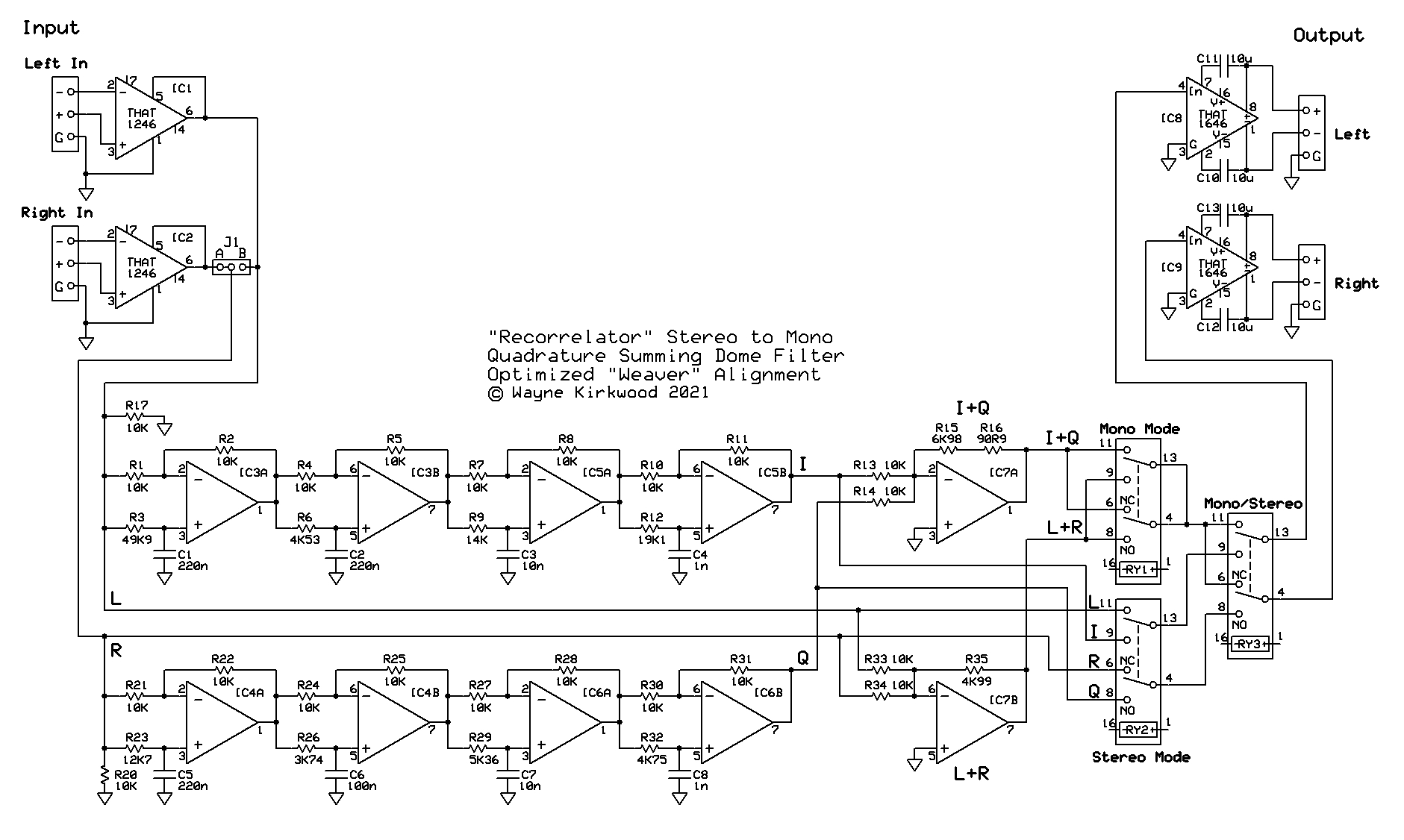I've taken an interest in the Studer 90° Filter and found both an error in the sims and, with the aid of a forum member, an error in the Studer implementation.
I built one of the 90° quadrature summing filters and think it has two limited, but useful, applications.
The first is making useful mono from out-of-polarity synth patches that don't fold down properly. The second application is mono playback for ambient sound and AM broadcasting.
My overall listening impression is that mono created this way more closely resembles its stereo counterpart than L+R/2.
The original images in this thread do not render inline due to the forum upgrade and Dropbox.
Here is the "in polarity" response posted previously.
Out-of-polarity response:
There are a couple of errors in the above sims:
(1) The mono output in the first example is not actively summed. The resistive summation has a 6 dB loss. Thus, when equal inputs are applied the actual sum should be +3 dB. The 6 dB resistive loss makes it appear to be -3 dB.
(2) The "out-of-phase" example should use two equal but opposite voltage sources to correctly model Left and Right. In normal use left and right are electrically presented in common mode. (Single-ended, unbalanced, ground-referred.) The model treats the filter and the mono summation as a differential device fed by a differential source. The filter, and it's output network, are not differential devices. Thus two equal but opposite voltage sources are required to correctly model out-of-polarity Left and Right inputs. The mono sum of the output driven by out-of-polarity inputs should also be +3 dB. In the model it's not: The differential to common mode conversion (where the outputs sum) combined with the loss of the resistively-summed output in the same network reduces the modeled output voltage by 12 dB from +3 to -9 dB.
The bottom line is that the 90° filter actually produces identical level outputs, (at +3 dB) with both in-polarity and out-of-polarity inputs.
The prototype looks like this:
The red trace is conventional L+R. Green and Blue are both in and out-of polarity.
A forum reader found the Weaver optimization for the Dome filter which corrects errors in the Studer response.
The Weaver optimized 90° Dome Filter looks like this:
There are some sample sound files here. The first demonstrates "disappearing" L-R when mono'd - in a following post there are two mono versions of the Beatles' Paperback Writer.
The Studer "90° Filter" Stereo to Mono Summer/Recorrelator - Page 3 - Pro Audio Design Forum
When the "lost" Side information is preserved the result provides both higher peak and RMS levels. Hard-panned mix elements are brought more to the forefront when mono'd as "I+Q."
There are also other soundfiles scattered through the thread as well as a working schematic.
I like what this gizmo does despite its limited applications.



